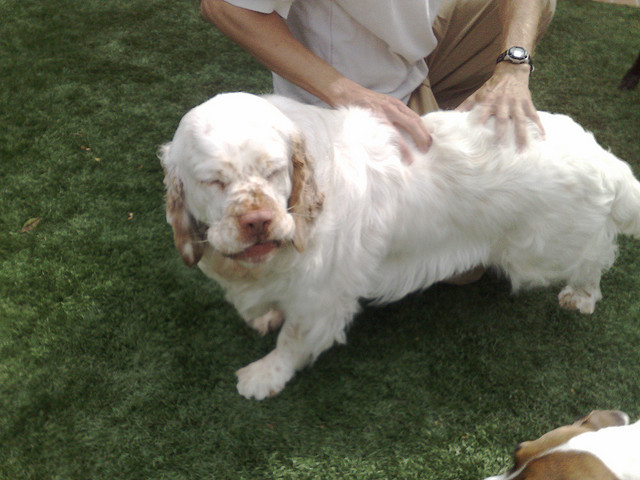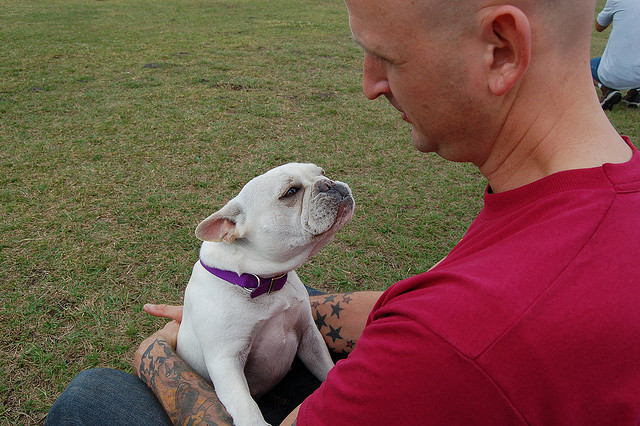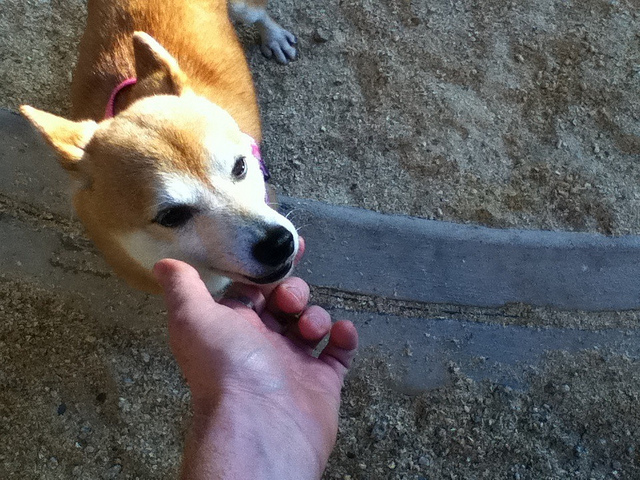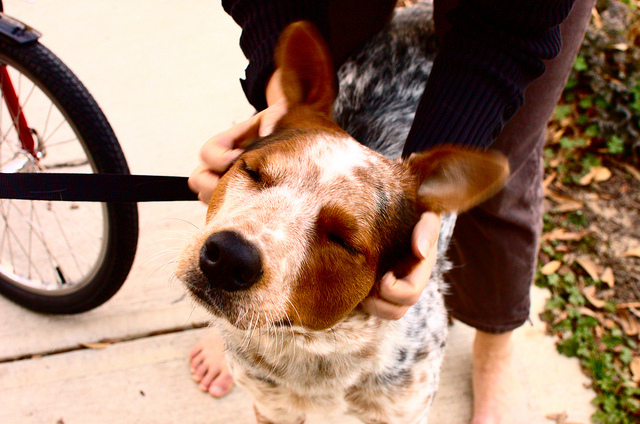Dog bite prevention is an ongoing cause, especially with more and more dogs living in close quarters with humans. Teaching your child the correct way to pet a dog (soft, slow pets, no patting or fast movements) as well as what places are safest to reach for (after asking of course!) are some of the best way to prevents dog bites. Robin Bennett, CPDT-KA and author of All About Dog Daycare, helped us come up with 5 places it is okay to pet most dogs – just remember all dogs are different.
#1 – Chest
Most dogs love a good scratch on the chest. It’s nonthreatening and it feels good. Just make sure your child’s face is not right in the dog’s.

#2 – Back
Possibly the safest place to pet a dog is on her back. You can approach and stand by his side (non-threatening) and your face and hand are not near his mouth. Be careful to not startle the dog by accidentally “sneaking” up on him.

#3 – Side of Body
Like the back, the side is a safe place to pet a dog. Remind kids to be gentle and slow while petting and not to “hit” a dog on the side as it might provoke or scare her.

#4 – Chin
Like the chest, many dogs love their chin scratched. To be safe, start by scratching the chest and move up to the chin, which is obviously closer to the mouth and therefore more of a risky place to scratch.

#5 – Side of Head
Many dogs love their ears scratched. In fact, they will often lean into your hand while you do it. However, this spot is really close to the top of the head – a place that many dogs do not like to be petted, so be careful when approaching the ears and do so from the side.


